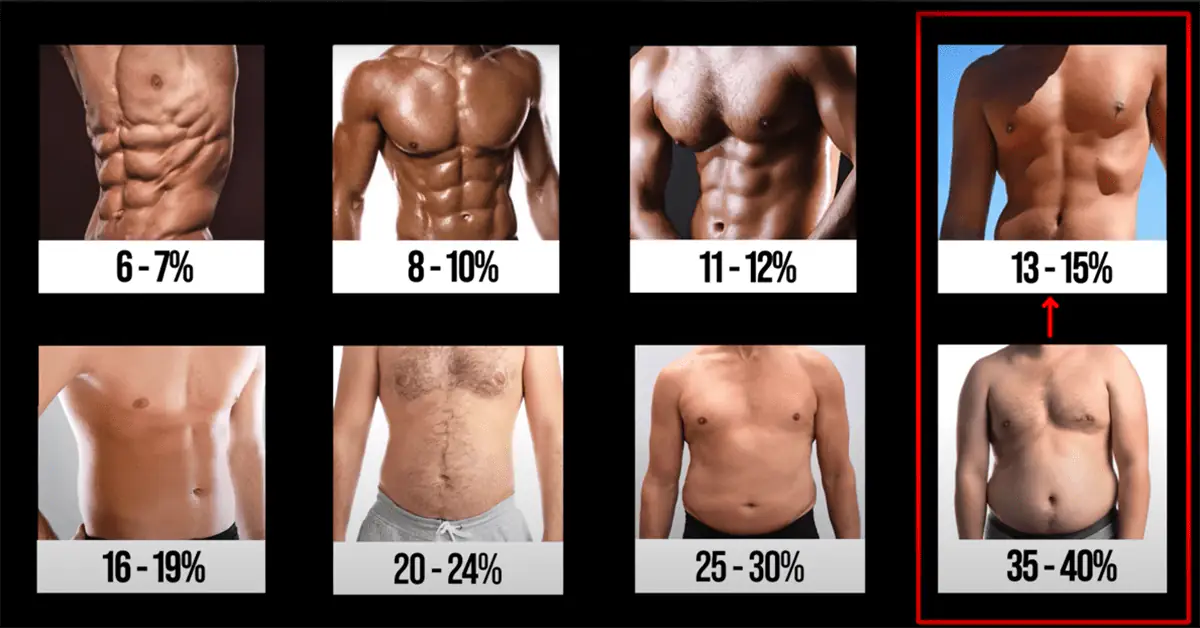
Menu

Body fat percentage is a key indicator of overall health and fitness. While many people focus solely on body weight, understanding your body fat percentage provides a more accurate assessment of your body composition and health status. In this comprehensive guide, we will explore everything you need to know about body fat percentage, including its significance, how to measure it, factors affecting body fat percentage, and strategies for managing and optimizing your body composition.
Body fat percentage refers to the proportion of fat mass to total body weight. Unlike body weight alone, which can be influenced by factors such as muscle mass and bone density, body fat percentage provides a more accurate assessment of your body composition. Maintaining a healthy body fat percentage is crucial for overall health and wellness, as excessive body fat has been linked to an increased risk of chronic diseases such as obesity, diabetes, heart disease, and certain cancers.
There are several methods available for measuring body fat percentage, each with its own advantages and limitations. Common methods include:
1. Calipers: Caliper measurements involve using skinfold calipers to pinch and measure skinfold thickness at various sites on the body. These measurements are then used to estimate body fat percentage using specific equations.
2. Bioelectrical Impedance Analysis (BIA): BIA devices measure body fat percentage by sending a low-level electrical current through the body and analyzing the resistance encountered. BIA devices are convenient and widely available but may not always provide accurate results.
3. Dual-Energy X-Ray Absorptiometry (DEXA): DEXA scans use X-ray technology to measure bone density, lean mass, and fat mass. While DEXA scans are considered highly accurate, they are expensive and typically only available in clinical settings.
4. Hydrostatic Weighing: Hydrostatic weighing, also known as underwater weighing, involves submerging the body in water and measuring buoyancy to determine body density and, subsequently, body fat percentage. This method is highly accurate but requires specialized equipment and expertise.
Several factors can influence body fat percentage, including genetics, age, gender, diet, physical activity level, and hormonal balance. While genetics play a significant role in determining body fat distribution and metabolism, lifestyle factors such as diet and exercise also play a crucial role in managing body fat percentage. Additionally, hormonal imbalances, such as thyroid dysfunction or imbalances in insulin and cortisol levels, can impact body fat regulation.
Maintaining a healthy body fat percentage requires a multifaceted approach that includes a balanced diet, regular physical activity, adequate sleep, stress management, and hydration. Here are some key strategies for managing body fat percentage:
1. Eat a Balanced Diet: Focus on consuming whole, nutrient-dense foods such as fruits, vegetables, lean proteins, whole grains, and healthy fats. Limit intake of processed foods, sugary beverages, and foods high in saturated and trans fats.
2. Engage in Regular Exercise: Incorporate a combination of cardiovascular exercise, strength training, and flexibility exercises into your routine to promote fat loss, preserve lean muscle mass, and improve overall fitness.
3. Monitor Portion Sizes: Pay attention to portion sizes and practice mindful eating to avoid overeating and promote weight management.
4. Stay Hydrated: Drink plenty of water throughout the day to support metabolism, maintain hydration, and promote overall health.
5. Get Adequate Sleep: Aim for 7-9 hours of quality sleep per night to support healthy metabolism, hormone regulation, and overall well-being.
Understanding and managing your body fat percentage is essential for achieving optimal health and fitness. By incorporating a balanced diet, regular exercise, and healthy lifestyle habits, you can effectively manage your body composition and support overall well-being. Alongside these fundamental practices, leveraging our fitness calculators and fat percentage calculator can provide invaluable insights into your fitness journey. These precision tools offer personalized guidance, helping you track progress and set realistic goals. Additionally, incorporating our resistance band set into your exercise routine can enhance strength training, improve muscle tone, and increase calorie expenditure, further supporting your efforts to manage body fat percentage and achieve your health and fitness goals. Remember, holistic health and wellness practices encompass more than just body fat percentage—prioritize overall well-being to thrive in your fitness journey.
1. What should my fat percentage be?
A: The ideal fat percentage varies depending on factors such as age, gender, and fitness level. Generally, for men, a healthy fat percentage ranges from 10% to 20%, while for women, it ranges from 18% to 28%. However, optimal fat percentage can vary based on individual goals and preferences.
2. What percent is high in fat?
A: A high percentage of body fat typically refers to a fat percentage that exceeds the recommended ranges for optimal health. While specific thresholds may vary, body fat percentages above 25% for men and 32% for women are generally considered high and may increase the risk of obesity-related health issues.
3. What are the best fat percentages?
A: The best fat percentages are those that support overall health, fitness, and well-being. For most individuals, achieving a fat percentage within the recommended ranges for their age and gender can promote optimal health and reduce the risk of obesity-related health issues. However, the “best” fat percentage can vary based on individual goals, preferences, and fitness objectives.
4. Is 30% body fat fat?
A: A body fat percentage of 30% is considered high, especially for men. While body fat percentage recommendations can vary, a fat percentage of 30% exceeds the recommended ranges for optimal health and may increase the risk of obesity-related health issues. Individuals with a body fat percentage of 30% may benefit from lifestyle modifications such as improved diet and increased physical activity to reduce body fat and improve overall health.